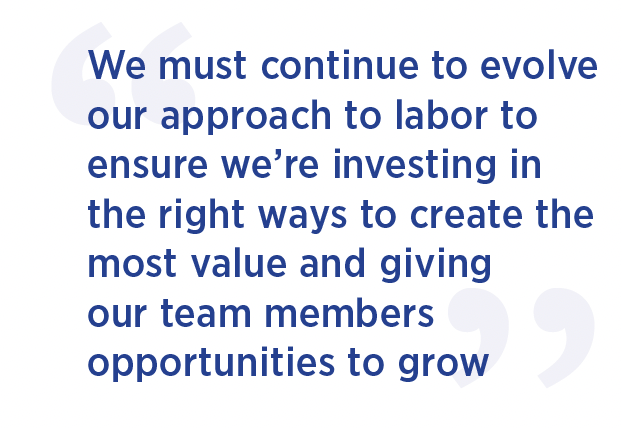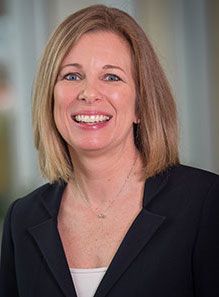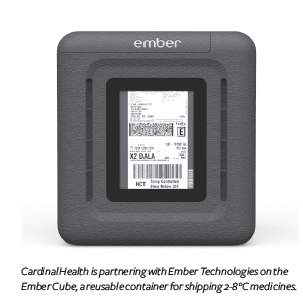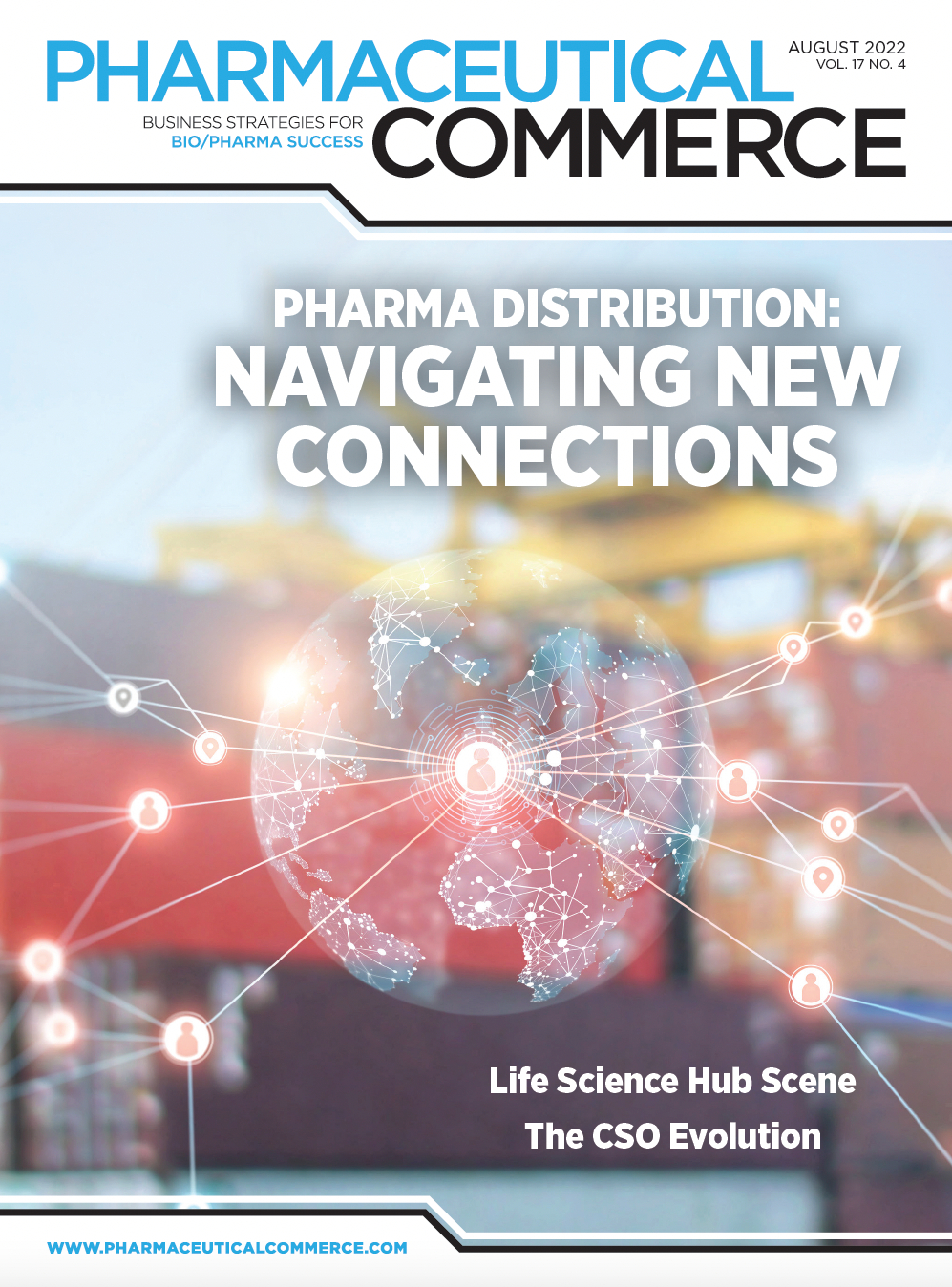Pharma Distribution: Carving New Ground
Pharmaceutical distribution today is anything but monolithic. While companies in this space are grappling with issues ranging from inflation and supply chain disruption to workforce scarcity and DSCSA implementation, there’s still plenty of room for smaller players to stake out part of the terrain to call their own
The complex pharmaceutical distribution ecosystem in the US was recognized by the federal government as being “critical infrastructure” during the COVID-19 pandemic—and for good reason. Pharmaceutical distributors large and small provide vital connective tissue by consolidating, delivering, and returning orders and handling recalls among thousands of manufacturers and hundreds of thousands of individual pharmacies, hospitals, healthcare facilities, and other sites of care. With disruption being more the rule than the exception these days, distributors continue to react and adapt to an ever-changing array of factors that threaten to undermine the steady supply of critical lifesaving medicines to hospitals, pharmacies, healthcare providers, and patients. All continue to innovate and automate to maximize business continuity for themselves and their manufacturer clients.
Biopharma companies and their third-party distributor partners tend to organize their programs into four main distribution buckets: wholesale, specialty, physician, and direct. The “Big Three”—AmerisourceBergen, Cardinal Health, and McKesson—dominate the distribution of products in the wholesale (primary care) and generic space, and these companies are increasingly distributing specialty therapies. Their prominent role in the overall US economy has helped them to gain favorable recognition in the vaunted Fortune 500 ranking. According to the latest (2022) ranking, based on revenue for the fiscal year that ended in September 2021:
- McKesson holds the No. 9 spot, with $238 billion in revenue
- AmerisourceBergen holds the No. 10 spot, with $214 billion in revenue
- Cardinal Health holds the No. 15 spot, with $160 billion in revenue
- The share of market flowing through the Big Three grew from 87% in 2013 to 92% in 2017, according to a 2019 report from Deloitte1
“The Big Three dominate the wholesale distribution category, but when considering specialty, orphan and rare, and cell-and-gene therapies, it bifurcates pretty fast,” says Bill Roth, general manager and managing partner of Blue Fin Group, an IntegriChain company. “There are new distribution companies coming into this space that offer manufacturers higher degrees of collaboration and service. So there’s still plenty of opportunity for smaller companies to thrive in this space.” Today, smaller players are continuing to finetune their strategy and specialize their offerings, so they are not left behind. “Within pharma distribution today, it’s pretty much ‘go big, go niche, or go home,’” adds Roth.
Bill Roth

For example, there is Accredo, a wholly owned subsidiary of Express Scripts, the pharmacy benefit manger (PBM) giant (which is owned by Cigna). Accredo is the exclusive specialty pharmacy and distributor for Biogen’s Spinraza (nusinersen), a therapy for patients with spinal muscular atrophy. “Accredo is the only distributor of Spinraza, so every doctor and every hospital that wants to access this therapy must buy it from the company,” says Roth. “Many smaller companies say, ‘I can’t play in the specialty distribution space. But if a company is able to win a contract to be the exclusive distributor for even one high-value specialty therapy like Spinraza, that’s still a viable business model.”
What’s keeping distributors up at night?
From the 50,000-foot view, a diverse array of drivers is shaping the pharma distribution landscape today, including:
- Unpredictable product availability
- Supply chain disruptions
- Labor constraints and the competition for talent
- Opioid litigation
- Implementation of the Drug Supply Chain Security Act (DSCSA)
- The need for ongoing innovation and improved data-driven visibility
On a more granular level, these additional issues are keeping distributors up at night, says Roth:
- How to maintain bundled buying and selling arrangements with national accounts
- How to provide value to manufacturers and downstream channels for specialty, orphan and rare, and cell and gene therapies
- How to better understand the nuanced differences around products, related to therapeutic area, drug class, product archetypes, and benefit structure
- Understanding regulations that manufacturers face relative to fees and discounts
- How to reconcile advice coming from other distributors, consulting firms, and legal firms
- How to conduct bona fide fair market value (FMV) assessments and by which organizations
- How FMV influences downstream healthcare provider reimbursement
The top three distributor organizations recognize these evolving complexities and the need to adjust.
“As more innovative therapies hit the market, it’s our responsibility to make these products accessible for our health system, community practice, pharmacy customers, and the patients they serve,” says Heather Zenk, president of supply chain operations and distribution services at AmerisourceBergen.
Victor Crawford, CEO, pharmaceutical segment for Cardinal Health, who also serves on the board of directors for the Healthcare Distribution Alliance (HDA), adds, “We are continuously troubleshooting issues that impact our customers and are staying close to our sourcing and inventory teams, and [are] working closely with our pharmaceutical manufacturer partners to develop strategies that minimize risks and the potential for disruption.”
Citing its technology, safety measures, and patient-first approach, Ammie McAsey, senior vice president of customer distribution experience for McKesson, says: “We are focused on attracting, developing, and retaining talent that believes in innovation and has the skills required to help bring our growth platforms to life.”

Similarly, ongoing complexities within today’s labor market underscore the importance of maintaining and investing in the right talent. “There is currently a significant need for e-commerce and warehouse workers across the pharma supply chain. That said, as an industry, we need to start shifting how we’re thinking about skills and capabilities within our workforce,” notes Zenk.
With regard to the growing use of automation, she explains: “We’re not replacing human workers, but instead, we’re using technology in conjunction with our talent to increase overall efficiency and augment our overall capabilities. We must continue to evolve our approach to labor to ensure we’re investing in the right ways to create the most value and giving our team members opportunities to grow in their roles.”
Meanwhile, to address what he calls “the unprecedented labor shortages on operations within our own facilities and partners in the global supply chain,” Crawford of Cardinal Health explains, “Over the past six months, we have rebalanced our wages for our front-line workers to ensure market-competitive compensation.”
Ammie McAsey

The financial landscape
According to Roth, for several years, pharma distributors had been operating in a classic arbitrage model: “buy low and sell high.” But more recently, these companies have morphed into more of a bona fide fee-for-service model, and this has created constraints on what the manufacturer can pay their distributor partners. Today, drug manufacturers launching a new drug into the US distribution market are confronted with the need to pay all forms of indirect distribution as a FMV fee for service. However, Roth notes that the definition is not always clear, and confusion over the FMV fee for service can arise based on:
a) How well the drug manufacturer understands the regulations around the topic
b) What advice the manufacturer is receiving from distributors, consulting firms, and legal teams
c) Which third-party partner the manufacturer chooses to conduct the FMV evaluation,
d) How their legal team guides the process
The importance of getting this done compliantly is that if the process doesn’t align to regulatory standards, the manufacturer is at risk of violating several federal laws, including anti-kickback statutes, false claims, and defrauding either Medicare or Medicaid. To avoid potential pitfalls, Roth says that drug manufacturers must engage experienced legal counsel and hire a third-party expert that is licensed and insured to conduct this type of due diligence.
Meanwhile, he notes that while inflation and supply chain challenges have continued to drive up the cost of labor, fuel, and raw materials, these economic factors are often not appropriately factored into the current FMV due to lag time, as the FMV is typically updated only every three years or so.
Room at the table
Within the pharma landscape, there are three basic product archetypes—branded therapies, generic therapies, and high-cost specialty medications. Specialty medications are defined as those that are used to treat chronic, complex diseases, orphan drugs for rare diseases, and cell and gene therapies, all of which have complex criteria related to the distribution, delivery, drug administration, and safety. Today, the biggest categories in the specialty medication category are oncology, immunology, and neurology.
Within the wholesale distribution channel, a prime vendor model usually prevails. With this approach, a given distributor typically holds exclusive contracts to deliver pharmaceutical and related products to retail pharmacies, hospitals, and government accounts (Physician offices buy from other forms of distribution).
“By comparison, the distribution of specialty therapies follows a very different path from the primary vendor distribution model,” explains Roth. “Within the specialty medication space, no single distributor is able to carry every available specialty therapy, so hospitals and physician offices will need to purchase specialty medications from all of the different specialty distributors.”
In recent years, a growing number of smaller companies that have made a name for themselves in the specialty medications distribution space include BioCareSD, Morris & Dickson, Anovo, CureScript, and others. “The reason a manufacturer of a given specialty medication will be more open to partnering with these smaller, newer players is that there are really no economies of scale to be found when handling an exclusive or highly limited drug, or a drug with a limited patient base or distribution network,” says Roth. “Frankly, when working with most specialty products, they are used for smaller patient populations and, therefore, fewer sites of care. And these sites of care will source product from where it is available, as opposed to some preferred route of distribution. Again, the patient populations and unit volume are just too small to consider broad distribution access.”
Similarly, the smaller, specialized distributors are able to differentiate themselves by “really getting into the knowledge of the product in terms of the therapeutics landscape and the drug itself, the product archetype, and the benefits structure, as oncology works differently from immunology and neurology,” adds Roth. In addition to being geared toward their area of expertise, these smaller distributors are also more nimble and have lower overheads. “Every transaction matters, so that’s their competitive advantage.”
On the other end of the spectrum, scale brings its own advantages. “We have the infrastructure, relationships, and scale to ensure these critical medications reliably reach their destinations every day, and we continue to invest in and expand our network alongside the growing specialty pipeline,” says AmerisourceBergen’s Zenk.
Later this year, AmerisourceBergen will open a new specialty distribution center in Montclair, CA. The company also acquired Alliance Healthcare from Walgreens in June 2021, one of the largest wholesalers in Europe. “This will help us to significantly expand our reach, solutions, and capabilities in pharmaceutical distribution throughout Europe and beyond,” she adds.
Investing in technology and partnerships
The past two-and-a-half years have underscored the need to ensure business continuity in all facets of healthcare delivery. For today’s leading pharma distributors, that has meant investing in technologies that enable real-time visibility, improved logistics management, increased automation, data analytics through the use of machine learning, and artificial intelligence (AI).
“The integration of technology such as artificial intelligence and advanced automation within our distribution centers will improve operational excellence and create the optimal customer experience,” says McAsey of McKesson. “We’ve been investing in technology to notify stakeholders about contingency plans and business-continuity strategies in order to safeguard patient care.” By way of example, she notes that McKesson has partnered with Accuweather to have access to an advisory meteorologist 24 hours a day, 365 days a year, to plan around potential weather-related disruptions to the company’s distribution and transportation operations.
The goal of recent technology investments, according to Crawford, is to “build a cognitive supply chain that plans and executes with a high degree of accuracy, and delivers phenomenal speed and reliability balanced with the right cost.”

Meanwhile, Zenk adds, “We’re also keenly focused on policy. Through our advocacy arm, we’re constantly watching how the legislative and regulatory landscape is evolving and communicating with our partners and customers accordingly.” For example, she says, “We’re continuing to look for opportunities with not only FDA-approved products, but also Emergency Use Authorization (EUA) therapies, as the industry gets more comfortable using EUA to expand and protect patients’ access to care in times of uncertainty or crisis.”
Cardinal Health has created several strategic partnerships to help address current challenges and meet future demands. In June, the company launched a collaboration with Zipline, a provider of instant logistics, to enable long-range drone delivery of on-demand pharmaceutical products to retail pharmacy locations. As part of the initial rollout, Cardinal Health is now using drones to deliver certain pharmaceutical products and medical supplies to Cannon Pharmacy Main, an independent pharmacy chain that services multiple North Carolina locations, to help mitigate the risk of inventory stock-outs and reduce barriers for patient access.
Zipline operates the world’s largest automated on-demand delivery service, which is said to reduce delivery emissions by 98% compared to standard delivery options, and has the potential to create a more personalized and faster customer experience. To date, the company has made more than 300,000 commercial deliveries containing more than five million units of vaccines and other medical products.
Cardinal Health is also partnering with Ember Technologies to deliver a cold-chain solution that ensures product integrity and security “while significantly reducing shipping waste in the transport of temperature-sensitive medicines,” says Crawford. Specifically, the Ember Cube “is the world’s first self-refrigerated, reusable shipping box to transport temperature-sensitive biologic medicines that uses cloud-based temperature reporting and GPS location tracking, providing us with unprecedented visibility to action if real-time intervention is needed,” he contends.
Meanwhile, by partnering with FourKites, whose supply chain visibility platform integrates machine learning and AI, Cardinal Health is working to enhance real-time visibility and improve the reliability of pharmaceutical product shipments in transit.
DSCSA’s impact on distributors
The full track-and-trace serialization requirements of DSCSA go into effect in November 2023. “We believe DSCSA is a key step forward in securing the pharmaceutical supply chain in the United States,” says Zenk. “Currently, the different standards and regulatory requirements across state lines create complexities and a patchwork system, so we are looking ahead to full DSCSA implementation, which will bring greater interoperability, and the standardization of technology, data, third-party logistics (3PL), and licensing requirements will help create a harmonized, safer, and more secure system for all.”

“By including new rules impacting wholesalers and 3PLs into DSCSA, there will be process and standardization across the country, building upon some of the more stringent existing state rules, and hopefully resulting in a more streamlined licensure process,” adds Crawford. However, he notes, “To smooth the process, FDA must be clear and consistent in the guidance as to how the states will act to enforce the new federal standards and traceability provisions.”
Zenk believes it’s important for the industry to continue to help lawmakers better understand the distribution space and inform the most effective change. “Connectivity, communication, and transparency between stakeholders will be critical throughout the implementation process, as any weak link in the supply chain creates a weak link for all,” she says.
In March, the HDA Research Foundation released survey results that indicate that healthcare supply chain partners “remain in the formative stages” of establishing the interoperable transaction data connections required to comply with DSCSA by the pending deadline of Nov. 27, 2023. HDA’s latest Electronic Product Code Information Services (EPCIS) Implementation Benchmarking Survey assesses the industry’s progress in adopting the GS1 system of standards for EPCIS and trading partner plans for sending data.
According to HDA, EPCIS is currently the only widely recognized international standard that allows supply chain partners to share DSCSA-required data in a secure, electronic, and interoperable manner. “Clearly, industry stakeholders have made important decisions and progress since last spring, but establishing EPCIS connections remain a slow and complex process,” said Perry Fri, executive vice president, industry relations, membership education for HDA and chief operating officer of the HDA Research Foundation.
DSCSA implementation is creating opportunity for third-party experts, as nearly 70% of drug manufacturers report that they plan to use a third-party partner to connect (a seven-percentage-point increase from the previous survey). According to HDA, respondents cite a range of challenges for their progress to date, including a lack of guidance, delays due to FDA’s past enforcement discretion, and the perception by some that the agency will postpone the deadline, insufficient employee resources, and the inability to dedicate an IT team to test and implement EPCIS.
“Supply chain partners have their work cut out for them over the next [several] quarters. While we acknowledge that many manufacturers have made progress to exchange data via EPCIS, very few are sending it in production,” said Justine Freisleben, vice president, industry relations, HDA, at the time of the survey announcement. “With more companies relying on solution providers to connect, open lines of communication and coordination with distributors will be key—especially since a third-party connection adds a layer of complexity. Reversing the perceived lack of trading partner commitment and resources also will be important to share the continued safety and reliability of the US healthcare supply chain beyond 2023.”
When it comes to DSCSA implementation, a big, albeit widely overlooked, question is how ubiquitous the track-and-trace serialization will impact legacy policies and processes such as recalls, returns, and chargebacks. Because traceability down to the unit of sale doesn’t currently exist, our industry uses broad policies to guess at what a reimbursement scenario should be.
Heather Zenk

“Once DSCSA takes full effect, a big unknown is what drug manufacturers could request from their distributors regarding unit-level serialization,” explains Roth of Blue Fin Group. “Will serialized identification help or hurt when stakeholders are able to track a unit of sale down to a finite transaction and dollar amount? Can returns now be a 1:1 for what was paid versus some percentage of a moving dollar value?”
Under the current chargeback scenario, not all returned products have a reverse chargeback associated, and even if there is one, it’s not always at the then-current wholesale acquisition cost (WAC) or contract cost that ties back to the original transaction set. (Note: For returns, there are manufacturers that have policies that cover returnable goods to the manufacturer at the WAC less 10% or WAC less 5%.) “Now that transactions can be tied to the unit level, returns can be credited at the exact dollar amount that ties to the original transaction,” adds Roth. “Similarly, recalls don’t have to involve the nation’s pharmacies searching their shelves for lot numbers that may be affected. Following DSCSA implementation, the last shipper of the product should have 100% visibility to all the products in question for recall. It will be fascinating to see what visibility manufacturers are provided. And this might unlock a new set of fee-for-service, which could be another revenue stream for distributors.”
“While COVID-19 jumpstarted collaboration between supply chain partners and government entities and showcased the resilience of the supply chain, we need to keep that momentum going,” says Zenk. “As we begin to settle into a ‘new normal,’ we can’t revert or lose sight of the progress we’ve made as an industry. We must continue to collaborate across the public and private sectors to co-create solutions that drive efficiencies and increase overall visibility across the supply chain.”
Reference
